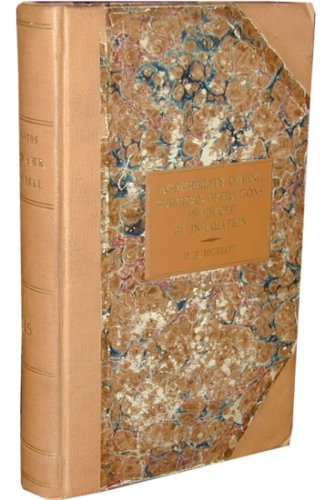|
|
|
|
"It has
long been an important problem in medical science to devise some method of
mitigating the pain of surgical operations. An efficient agent for this
purpose has at length been discovered. A patient has been rendered
completely insensible during an amputation of the thigh, regaining
consciousness after a short interval. Other severe operations have been
performed without the knowledge of the patients. So remarkable an
occurrence will, it is believed, render the following details relating to
the history and the character of the process, not uninteresting."
-Henry Jacob Bigelow |
| BIGELOW, Henry Jacob. Insensibility
During Surgical Operations Produced by Inhalation. In: The Boston Medical
and Surgical Journal, vol. XXXV, no. 16, November 18, 1846; pp: 309-17; no. 19,December 9,
1846; pp. 379-82. The whole volume, pp.1-544 (with index and ads)
offered. Boston: David Clapp, 1847. Octavo, early three-quarter cloth
over contemporary marbled boards, leather label on front board;
slipcase. $5300.
First edition of the first announcement of the successful use of anesthesia during surgical operations, one of the greatest discoveries of nineteenth-century medicine. "The most famous contribution by the United States to medical progress at this period was undoubtedly the introduction of general anesthesia, a procedure that not only liberated the patient from the fearful pain of surgery but also enabled the surgeon to perform more extensive operations. The discovery was marred by controversy. Crawford Long, Gardner Colton, Horace Wells, and Charles Jackson are all claimants for priority; some used nitrous oxide gas, and others employed ether, which was less capricious. There is little doubt, however, that it was William Thomas Morton who, on Oct. 16, 1846, at Massachusetts General Hospital, in Boston, first demonstrated before a gathering of physicians the use of ether as a general anesthetic. The news quickly reached Europe, and general anesthesia soon became prevalent in surgery" (Britannica). Morton's results were first announced by Bigelow in the November 18, 1846 issue of The Boston Medical and Surgical Journal. The December 19th issue (also included here) includes Bigelow's interesting and important defense of the process against charges by Dr. J.F. Flagg. Flagg's article, as well as several others discussing anesthesia (one by the noted physician John C. Warren) are also included. Provenance: From the Library of the Medical and Chirurgical Faculty of Maryland, with bookplate on front pastedown and stamps on general titles and index (not affecting Bigelow articles). Occasional stray marks and minor creasing to text, some scuffing to boards. |
